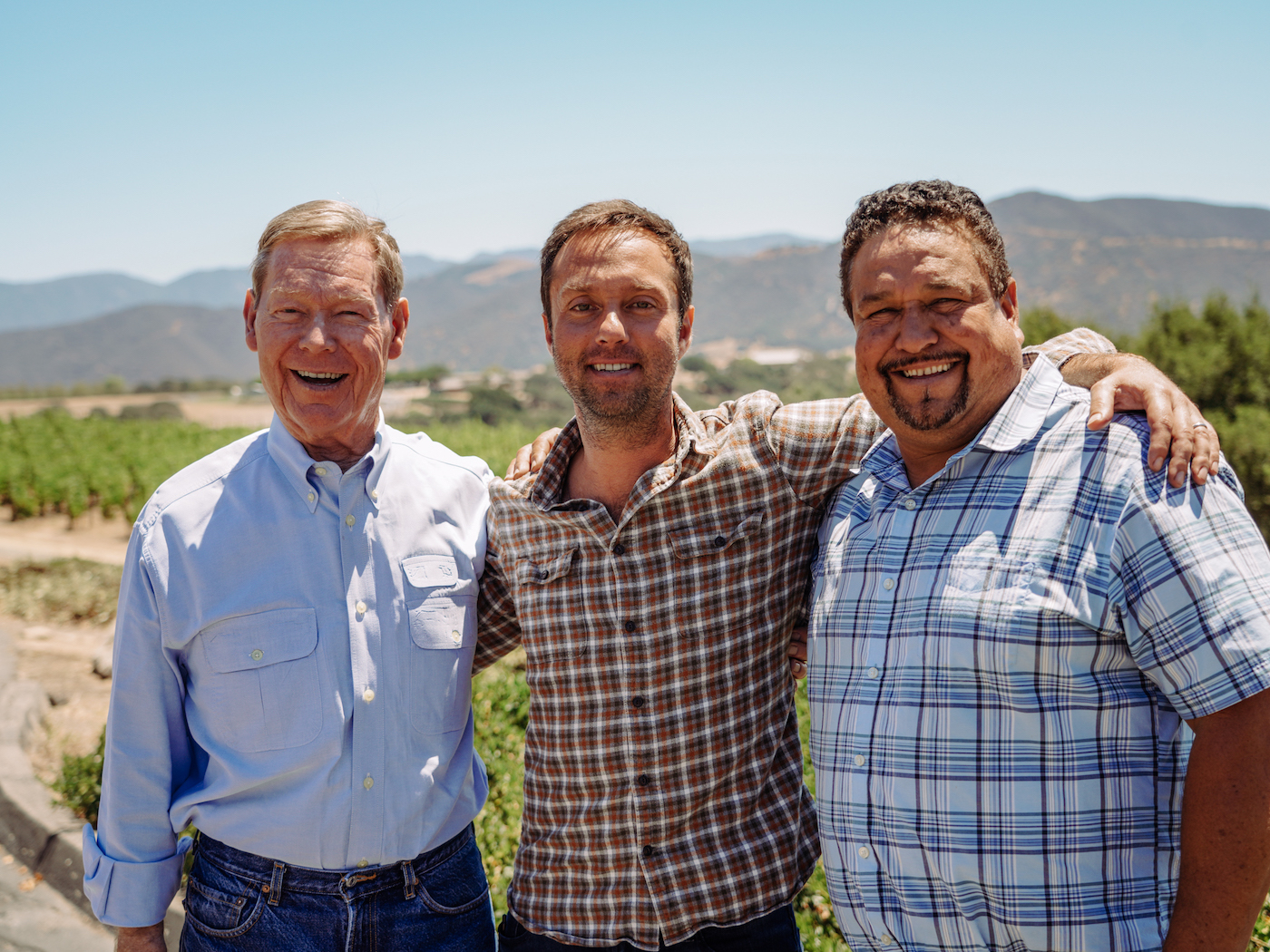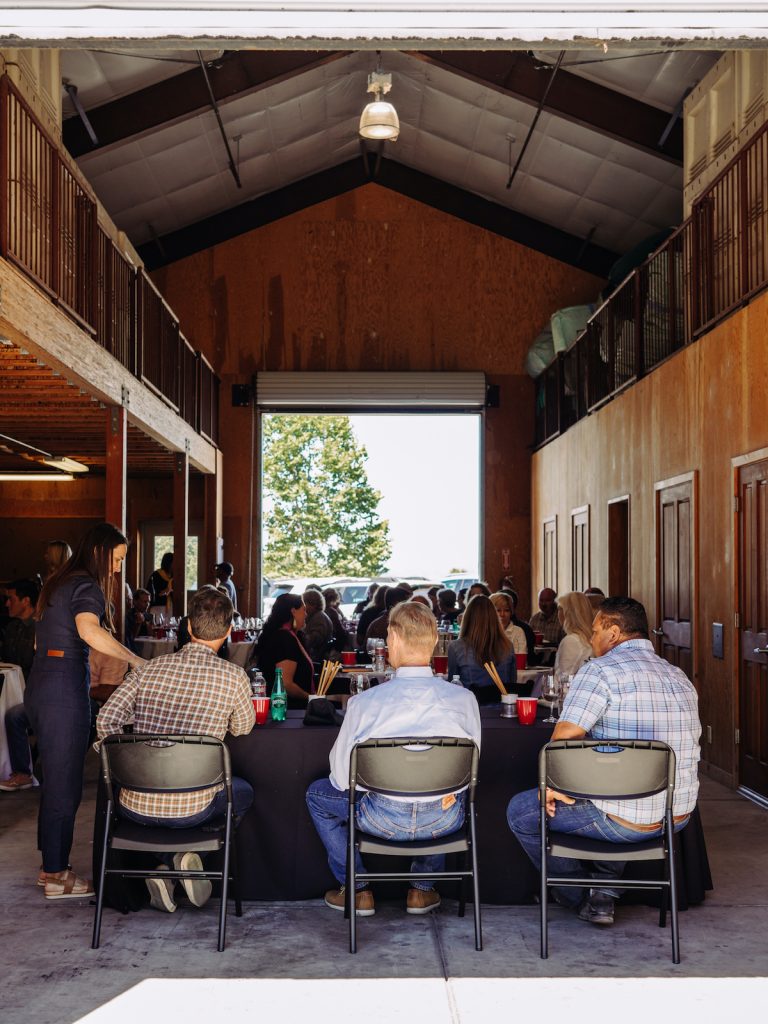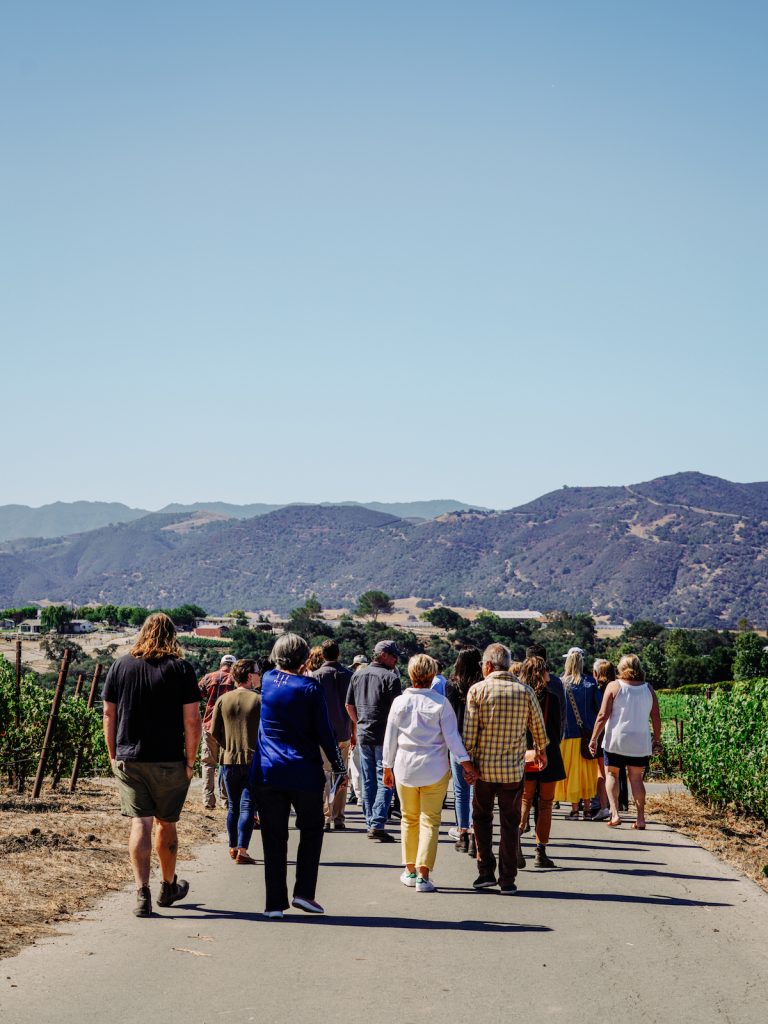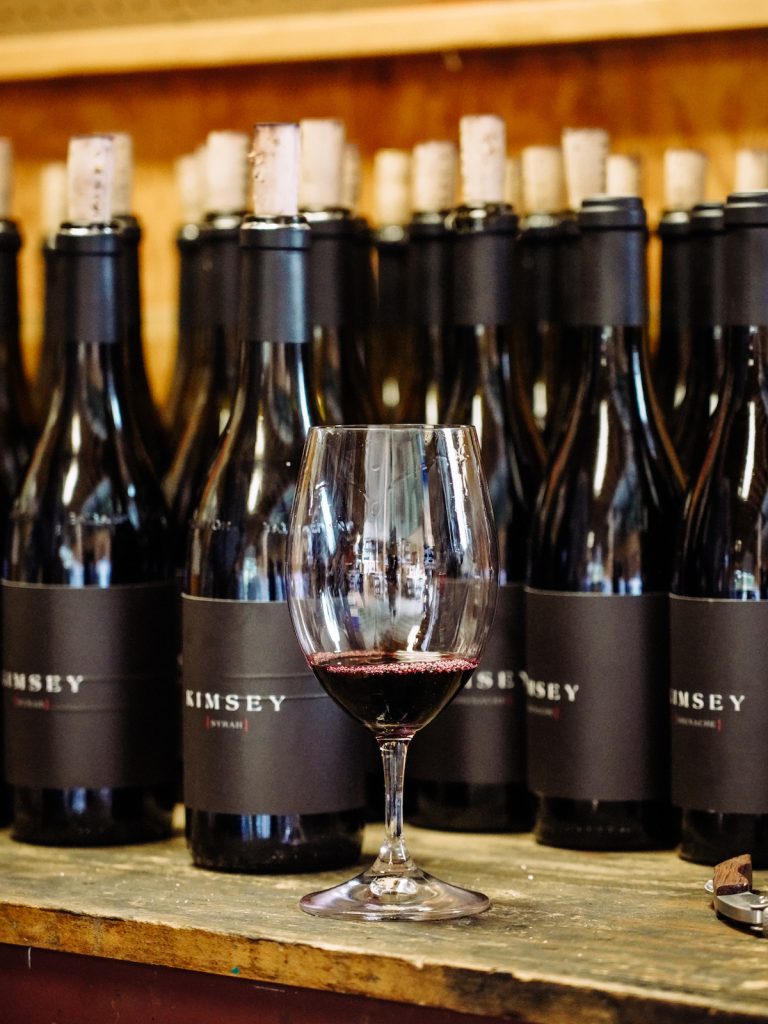Time in a Bottle Kimsey Vineyard’s 10-Year Retrospective Tasting

On a recent sunny afternoon, inside a cozy cabin enveloped by grapevines, a few dozen of us gathered to sip through 10 years of Kimsey Vineyard wines.
“Not just any 10 years,” winemaker Matt Dees reminded us. “The first 10 years!”
Indeed, sipping through the nascent decade of any wine project is a study in evolution, in progress, in transformation. As corks pop, Dees calls it, “a voyage of discovery.”

And it was a real treat – three men in off-the-cuff conversation about a young vineyard, in a young growing region, who’ve been on this voyage from the beginning, and together.
Bill Kimsey, the former global CEO for Ernst & Young, who, when living in London and entering retirement, came close to buying a wine estate in Italy. When he moved with wife, Nancy, to Montecito instead, the discovery of burgeoning viticulture in Santa Barbara County launched a love affair with Ballard Canyon, just outside Solvang, and a 45-acre plot of land that had never been planted before. “Sometimes, it’s better to be lucky than smart,” he jests, acknowledging a fair share of serendipity when it came to buying the property in 2005, planting it in 2008 and launching the first Kimsey wines in 2012, just one year before Ballard Canyon got federal recognition as a unique wine growing region, or AVA.
“As a proprietor, has this been a lesson in patience?” I ask him.
“Not really,” he chuckles, “but you do need a lot of runway!”
Dees, the whiz winemaker who’s been turning the wine grapes here into wine from the beginning, tells us much it hinges on the weather. As we walk among the 22 acres of planted vines: “Do you feel that?” Sure enough, this specific area in the southwest corner of Ballard Canyon is consistently bathed by sunlight and a penetrating heat, though tempered, if not tamed, by a dependable breeze, gusty at times, that rolls in all the way from the Pacific. “It’s a lesson in extremes,” he says, and, each vintage, it’s “a study in the nuances between hot and cold.”
Combined with varying elevations and various soil types with high water-holding capacity, Dees calls Kimsey Vineyard “one of my favorite plots of land on this spinning planet.” Quite the endorsement.

Ruben Solorzano, a man many in this wine growing region affectionately and respectfully call “The Grape Whisperer” for his decades of experience, and who’s been managing Kimsey from day one, echoes Dees’ testimonial about wide temperature swings. “Sometimes it’s 50 degrees at night and 90 during the day,” the co-owner of Coastal Vineyard Care tells us. “And our growing season is long.” Early insight from respected local soil experts like Wes Hagen and Jeff Newton were critical to establishing this vineyard. But it’s been Solorzano’s stewardship – yearly, detailed observations and calculations and tweaks aimed at maximizing quality – that’s been critical to advancing the pedigree of these grapes. They’re in-demand: 90% of Kimsey fruit gets sold to other wine producers.
“We used lessons learned over previous years in Ballard Canyon to plant grapes here,” he tells us, like planting different clones of syrah side-by-side, planting in high density, and placing vines low to the ground, so that sunlight reflecting off the dirt helps them ripen fully.
As we taste through 10 years of Kimsey’s three main wines – White Blend, Grenache, and Syrah – and 15 wines in all, there’s a common thread to be sure. But taking time to focus on distinctions reveals fascinating results. There’s consensus that about halfway through this first decade – at around the 2016 and 2017 vintages – the wines become more established. Stress early on, as young roots dug deeper and as youthful vines contended with on-and-off years of drought, was good. “They struggled,” Solorzano says, “and that was actually helpful, so now they are much more strong.” Vines are also all self-rooted today, which makes them “a lot easier to manage,” he adds.
Here are a few observations across the three wines that stood out to me:
White Blend: There’s a clear move toward freshness across the decade, thanks in large part to the eventual addition of grenache blanc, which was planted after its sister Rhône grapes, viognier, and roussanne. Today, Dees takes an initial one-to-one-to-one blending approach with all three grapes, then tweaks the formula based on how one variety might stand out in any particular vintage. The 2019 Kimsey White Blend ($60) in-market now, a 30-30-40 blend of grenache blanc, viognier, and roussanne, is dense and vibrant at once, with bright minerality and tropical fruit notes.

Grenache: This is my personal favorite of the Kimsey wines, a splashy, fruity, beautifully structured wine. Early renditions in 2014 and 2015 were meatier, denser, and a certain amount of syrah was blended in “for gravity,” as Dees put it, adding, “But did we really need it?” The wine is practically all-grenache today. By 2016, freshness becomes more pronounced, “the influence of vine age and root depth,” says the winemaker. The 2019 Kimsey Grenache ($72) has a lovely perfume, with raspberry-balsamic flavors that make it a powerhouse food wine. When we tasted a barrel sample of the 2021 vintage, which will likely be out in 2023, Dees exclaimed, “I find tremendous joy in its freshness.”
Syrah: The workhorse wine for the label is a real beauty. The label’s very first wine, the 2012 Syrah, remains vibrant, with a few dashes of funk. Early on, through the 2014 vintage, about 20% new French oak was used in the aging process, a stylistic choice that was then scrapped for older, neutral barrels that let the fruit sing solo. Dees called the 2017 vintage the beginning of “the modern era of Kimsey Vineyard,” with a series of drought years in the rear-view mirror and with vines firmly established. By 2018, “we saw no heat spikes, nothing was out of place and this vineyard rocked.” The 2019 Kimsey Syrah ($72) is silky, elegant, and powerful.
At the end, when the conversation turned to aging wine, an interesting assertion by Dees: “More important than predicting ageability is pin-pointing a window.” Generally, he defined that window of optimum enjoyment as five to 10 years for the Kimsey White Blend, 10 to 15 years for the Grenache and 10 to 20 for the Syrah.
But one final qualification: “Who cares about aging? If these wines taste this good now, what’s the point? The wines of Santa Barbara are unmatched in the world when drunk within the first 10 years.”
Find out more at kimseyvineyard.com.
And One More Thing…
Santa Barbara’s 2022 harvest is underway! Early ripening grapes – cooler climate grapes, mainly, earmarked for sparkling wine – began coming off the vines this week. Norm Yost, the man behind Flying Goat Cellars in Lompoc, picked pinot noir from Solomon Hills Vineyard in the Santa Maria Valley on Wednesday for his Goat Bubbles Rosé. Harvest is running two weeks earlier than last year, says Yost, but adds that flavors look great. Cheers!





